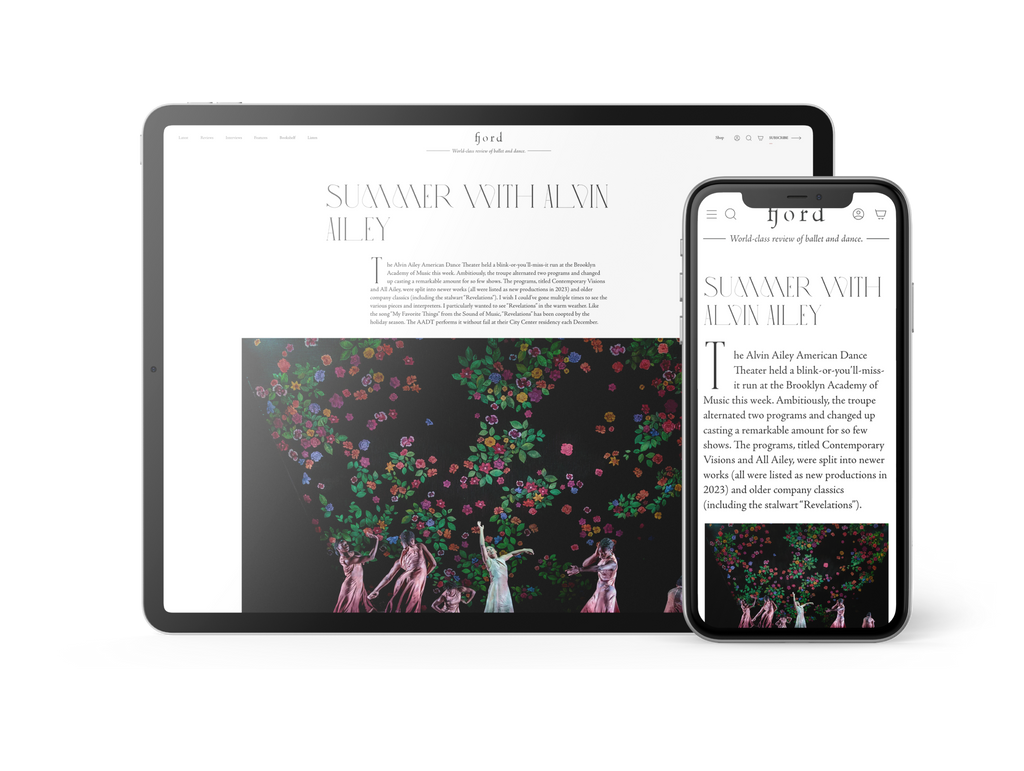Ryan Tomash Steps into a New Role
Back in October, New York City Ballet got a new cowboy. His arrival occurred in the final section of George Balanchine’s “Western Symphony.”
Continue Reading
World-class review of ballet and dance.
Frederick Ashton’s much-loved “Rhapsody” is perhaps epitomised by the scene in which six male dancers hold the lead aloft and parade him around like a king, a ring of glittering ballerinas encircling the reverent display. The plotless ballet, created as a birthday present for the Queen Mother in 1980 and presented here as part of a double bill celebrating the Royal Ballet’s founding choreographer, is all about spectacle—in fact, Ashton specifically enlisted Mikhail Baryshnikov, Russian virtuoso extraordinaire, for the starring role to ensure the piece had a central spark powerful enough to ignite the blaze of majesty he envisioned.
Performance
Place
Words

Francesca Hayward and James Hay in Frederick Ashton's “Rhapsody.” Photograph by Helen Maybanks


“Uncommonly intelligent, substantial coverage.”
Your weekly source for world-class dance reviews, interviews, articles, and more.
Already a paid subscriber? Login
Back in October, New York City Ballet got a new cowboy. His arrival occurred in the final section of George Balanchine’s “Western Symphony.”
Continue ReadingWhen Richard Move enters from stage left, his presence is already monumental. In a long-sleeved gown, a wig swept in a dramatic topknot, and his eyes lined in striking swoops, the artist presents himself in the likeness of Martha Graham—though standing at 6’4, he has more than a foot on the late modern dance pioneer.
Continue ReadingPerhaps not since Mikhail Fokine’s 1905 iconic “The Dying Swan” has there been as haunting a solo dance depiction of avian death as Aakash Odedra Company’s “Songs of the Bulbul” (2024).
Continue ReadingDance, at its best, captures nuance particularly well, allowing us to feel deeply and purely. In its wordlessness, it places a primal reliance on movement and embodied knowledge as communication all its own. It can speak directly from the body to the heart, bypassing the brain’s drive to “make sense of.”
Continue Reading
comments